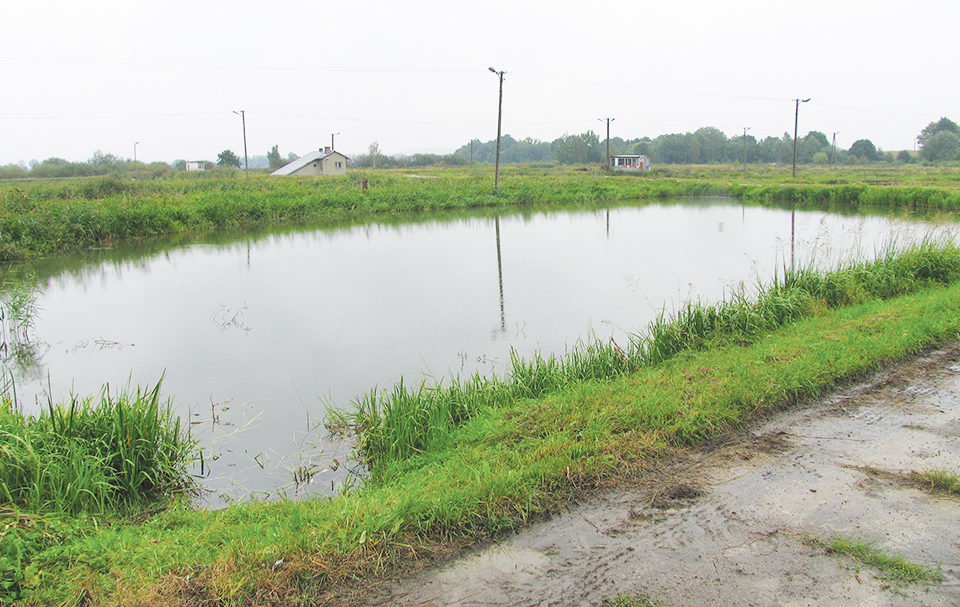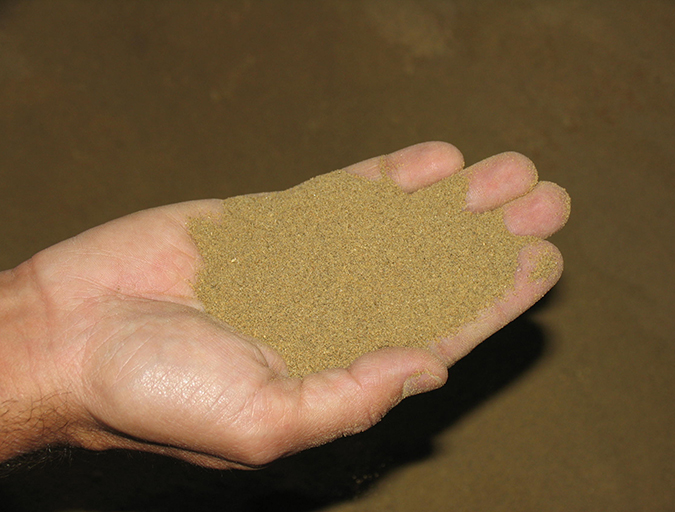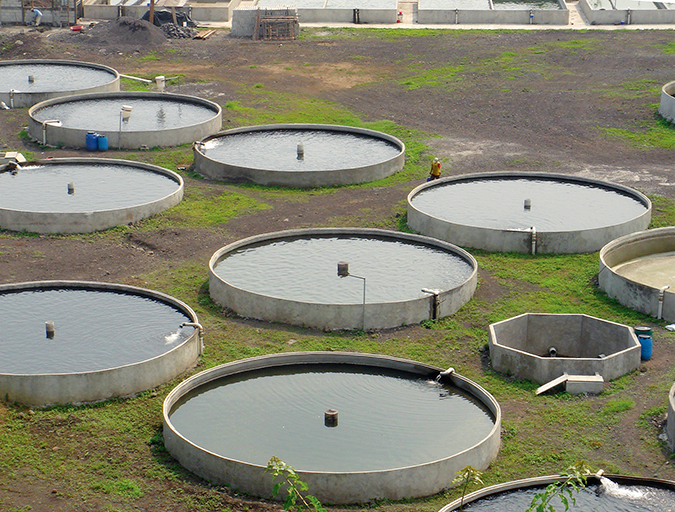Little guidance exists for acceptable concentrations of water quality variables

A table containing the acceptable concentration ranges for physical and chemical variables that affect the survival and growth of culture organisms would be a useful reference for aquaculture production managers. However, such a table would be difficult to make and interpret.
The table would have to be specific to species or at least species groups, because different groups of aquatic animals have different tolerances to the various water quality variables. It is well known that cold-water species tend to have lower tolerances for most potentially toxic water quality variables than do warm-water species. This is particularly evident in the differences in responses of the two groups of organisms to temperature, dissolved oxygen and ammonia.
As the names of the two species groups imply, cold-water species require lower temperatures than warm-water species do, but cold-water species also require greater dissolved-oxygen concentrations. In addition, they are not as tolerant of elevated ammonia nitrogen concentrations as warm-water species are.
Toxicity tests
The responses of aquatic organisms to specific water quality variables often are ascertained by conducting toxicity tests in which organisms are exposed for a particular length of time to specific concentrations of toxicants. The results of such tests usually are reported in terms of the LC50, or lethal concentration of a toxicant to 50 percent of the test organisms.
LC50 values are not directly useful in aquaculture. Producers desire the concentrations of toxins to remain not only below the levels lethal to any of the culture animals, but also below the concentrations that would have negative effects on survival and growth. Few toxicity test data are available demonstrating the effects of toxins at concentrations below the LC50 and especially below the concentration that causes some mortality.
To illustrate, the LC50 of ammonia nitrogen (NH3-N) for channel catfish has been reported to range from 1.50 to 3.30 mg/L. However, a study conducted by John Colt and George Tchobanoglous found the “no observed effect” level was around 0.05 mg/L and that a concentration of 0.22 mg/L caused a 17 percent decrease in growth.
Several studies have suggested that 0.05 times the LC50 values of common toxins such as ammonia nitrogen provides a reasonable estimate of the no observed effect levels – 0.05 times the lowest and highest LC50 values for channel catfish suggest a no-effect concentration of 0.08-0.17 mg/L for this species.
Notice that the range in LC50 values of NH3-N for channel catfish is rather broad. Differences in several factors could be responsible: water temperature, water chemistry, exposure time, water source, physiological condition and size of the test animals, etc. Factors also vary among waters and culture animals at different aquaculture facilities.
Exposure duration
Another major issue in evaluating data from toxicity tests is the duration of exposure. Toxicity tests typically are run at a fixed temperature under constant water quality conditions. However, in culture systems – especially ponds – temperature and other water quality variables fluctuate in intensity or concentration on a daily basis, as well as over longer time periods.
For example, temperature, pH and dissolved-oxygen concentrations increase from lowest values in the morning to the highest values in mid-day or early afternoon. In the case of ammonia nitrogen, the proportion of total ammonia nitrogen as NH3-N – the toxic form – are greatest when water temperature and pH are highest. However, these peaks of high concentration last for only a few hours.
A study by John Hargreaves and Semra Kucuk revealed that brief exposure to NH3-N concentrations considerably higher than the no-effect level (determined in toxicity tests run at constant NH3-N concentration) did not affect the survival or growth of three culture species: blue tilapia, channel catfish and hybrid striped bass. Moreover, the concentration of total ammonia nitrogen in ponds fluctuates over time, and higher concentrations seldom persist for more than a few days.
Hargreaves and Kucuk concluded that total ammonia nitrogen concentrations up to 4 or 5 mg/L are not harmful in ponds, in spite of occasional afternoon episodes in which NH3-N concentrations exceeded the no-effect level determined in toxicity tests run at constant NH3-N concentration.
Other variables that are potentially harmful to aquaculture species fluctuate in concentration on a daily basis, including water temperature, pH and dissolved-oxygen and carbon dioxide levels. Some other water quality variables do not vary in concentration according to a daily cycle, and results from toxicity tests can be applied with more confidence – provided the water quality in culture systems is fairly comparable to the conditions in the toxicity tests. But this is not always the case.
Heavy metals
Heavy metals such as copper and zinc are potentially toxic to fish, shrimp and other aquatic life. Their toxicity, however, varies considerably with the pH, total hardness and total alkalinity of the water. For example, a study by David Straus and Craig Tucker revealed that the LC50 for copper was 0.05 mg/L at an alkalinity of 16.00 mg/L, but 0.95 mg/L at an alkalinity of 127.00 mg/L. It has been found that a safe application rate for copper sulfate as an algaecide treatment for ponds is about 0.01 of the total alkalinity.
Metals form chelates with dissolved organic matter in water, and the chelated forms are relatively non-toxic as compared to free, ionic forms. Metals are less toxic to aquatic organisms in waters that have moderate to high concentrations of humic substances – such as river waters flowing from jungles or forests – than in other waters.
Other variables
Variables such as total dissolved solids (salinity or specific conductance), total alkalinity, total hardness and individual major cations and anions have effects on aquaculture species, but most species can tolerate a fairly wide concentration range of these variables. With the exception of total dissolved solids, these variables often do not affect the culture species directly, but influence culture conditions and indirectly impact growth and survival.
Low total alkalinity, for example, is undesirable in fertilized ponds, because less inorganic carbon will be available for phytoplankton photosynthesis than at higher total alkalinity. Moreover, there is less buffering capacity against pH changes in low-alkalinity waters, and low alkalinity is undesirable in ponds for feed-based aquaculture.
Toxicity tests are sometimes conducted for determining the effects of total dissolved solids (more often salinity) on various species. Results from such a 1997 study on common carp by J. Q. Wang and co-workers are provided in Table 1. Mortality did not occur in any of the salinity concentrations over the duration of the study, but increasing salinity had a negative impact on growth.
Boyd, Effects of Salinity, Table 1
| Salinity (ppt) | Food Energy to Growth (%) |
|---|
Salinity (ppt) | Food Energy to Growth (%) |
|---|---|
| 0.5 | 33.4 |
| 2.5 | 31.8 |
| 4.5 | 22.2 |
| 6.5 | 20.1 |
| 8.5 | 10.4 |
| 10.5 | -1.0 |
Most of the information on the effects of different concentrations of general water quality variables on survival and growth of culture species is from observations made by aquaculturists in production systems. However, a few studies, such as one done at Auburn University years ago on the effects of total alkalinity on production of bluegill sunfish and channel catfish, have been published (Table 2). Notice that the bluegill production was better at higher alkalinity in ponds where phytoplankton photosynthesis was the base of the food web, but in channel catfish ponds with feeding, total alkalinity had no influence on production.
| Total Alkalinity (mg/L as Calcium Carbonate) | Net Fish Production (kg/ha) Channel Catfish | Net Fish Production (kg/ha) Bluegill |
|---|---|---|
| 2.1 | 3,700 | 174 |
| 5.8 | 3,940 | 267 |
| 46.2 | 3,960 | 412 |
It should be noted that higher total alkalinity buffers pond waters – a factor that might be important in some situations where total ammonia nitrogen is high, and high rates of photosynthesis cause elevated pH. In shrimp ponds, adequate total alkalinity is required for molting. Thus, species differences and culture conditions must be considered in establishing a minimum or maximum concentration for any variable.
Perspectives
Although this column does not provide much guidance with respect to acceptable concentrations of water quality variables for use in aquaculture, it does point out why such tables are not commonly available. Such tables could be made, provided sufficient annotation was included to allow one to adjust the desirable concentration of a particular variable for the actual conditions at a particular production facility. I will attempt to make one or more such tables and present them in a future column.
(Editor’s Note: This article was originally published in the March/April 2015 print edition of the Global Aquaculture Advocate.)
Now that you've reached the end of the article ...
… please consider supporting GSA’s mission to advance responsible seafood practices through education, advocacy and third-party assurances. The Advocate aims to document the evolution of responsible seafood practices and share the expansive knowledge of our vast network of contributors.
By becoming a Global Seafood Alliance member, you’re ensuring that all of the pre-competitive work we do through member benefits, resources and events can continue. Individual membership costs just $50 a year.
Not a GSA member? Join us.
Author
-

Claude E. Boyd, Ph.D.
School of Fisheries, Aquaculture
and Aquatic Sciences
Auburn University
Auburn, Alabama 36830 USA
Tagged With
Related Posts

Aquafeeds
A look at protease enzymes in crustacean nutrition
Food digestion involves digestive enzymes to break down polymeric macromolecules and facilitate nutrient absorption. Enzyme supplementation in aquafeeds is a major alternative to improve feed quality and nutrient digestibility, gut health, compensate digestive enzymes when needed, and may also improve immune responses.

Aquafeeds
A look at the SME controlled extrusion process
A study was conducted using a Twin-Screw Extruder equipped with Specific Mechanical Energy (SME) and Density Control valves, to determine the effect of SME on the water stability of shrimp feeds. Further research is needed to evaluate the performance.

Responsibility
A look at various intensive shrimp farming systems in Asia
The impact of diseases led some Asian shrimp farming countries to develop biofloc and recirculation aquaculture system (RAS) production technologies. Treating incoming water for culture operations and wastewater treatment are biosecurity measures for disease prevention and control.

Responsibility
Calcium and magnesium use in aquaculture
Aquatic plants and animals get the essential nutrients calcium and magnesium from water and food. Calcium concentrations impact the hydration and development of eggs in a hatchery, where calcium carbonate precipitation can be troublesome.


